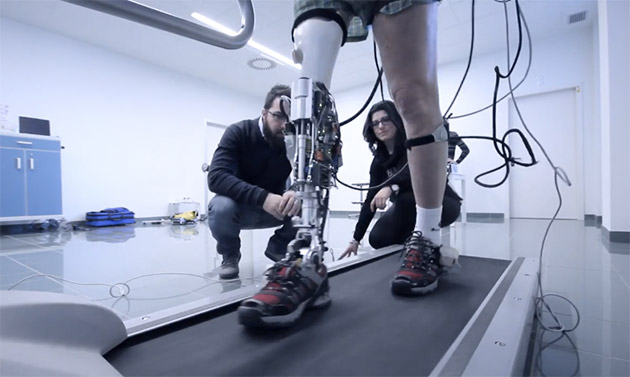You'll see a lot more instances of robotic arms in the news, but it doesn't mean high-tech prostheses for the lower limbs don't exist. The Cyberlegs project, for instance, is developing robotic legs that can help amputees move and walk more naturally. Each system is comprised of smart shoes equipped with pressure sensors and inertial measurement units, the limb itself, as well as a component and algorithm that can decode how the user intends to move. It can, for instance, tell if the user wants to start walking, to get up or to sit down -- based on the amputee's habits -- providing the proper support for each action. Users that need even more help can also be fitted with an accompanying pelvic brace that can assist them in moving their hips.
Cyberlegs is a joint project by a number of European institutions: the University of Ljubljana in Slovenia, Scuola Superiore Sant'Anna di Pisa, Fondazione Don Carlo Gnocchi Onlus in Florence, as well the Catholic University of Louvain and the Free University of Brussels in Belgium. Researchers from these schools have been working on the project since 2012 using $2.7 million in funds from the European Commission, but the Italian scientists have only just presented their work to the public this Monday.
Thus far, the system has already been tested by 11 people. But when the team got together recently to assess their work, they've determined that they still need to reduce the prosthetic's weight and size for comfort. The team is hoping to get additional funds from industrial partners to make that happen and to bring Cyberlegs to market in two to three years' time.

